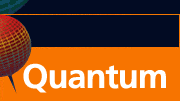CONTACTS
- Coordinator
Diego Dalvit
-
Quantum Lunch Location:
T-Division Conference Room, TA-3,
Building 123, Room 121
 |


Quantum Institute: Visitor Schedule
The Quantum Lunch is regularly held on Thursdays in the Theoretical Division Conference Room, TA-3, Building 123, Room 121.
For more information, contact Diego Dalvit.
To add your name to the Quantum Lunch email list, contact Charlotte Lehman
Thursday, March 4, 2010
12:30 PM - 2:00 PM
Speaker: Andrew Kerman (Lincoln Labs)
Technical Host: Gennady Berman
TOPIC: A metastable superconducting qubit
Abstract
One of the distinguishing features of Josephson-junction (JJ)-based qubits is their strong coupling
to electromagnetic (EM) fields, which permits fast gate operations (~10-100ns). However, it may
also be responsible for their short excited-state lifetimes (. 4us); that is, assuming the decay
process is electromagnetic, its rate depends on the same matrix element which governs intentional
qubit manipulations by external fields. Unfortunately, understanding and controlling spontaneous
decay of these circuits has so far proved difficult, because it also depends on their EM environment
at GHz frequencies, which is strongly influenced by microscopic degrees of freedom in the substrate,
surface oxides, or JJ barrier dielectrics. Although little is yet certain about the properties of these
degrees of freedom, work is ongoing to study them, and to reduce their number through improved
materials and fabrication.
In this presentation, I will discuss a different approach: a qubit which is insensitive to highfrequency
EM fluctuations by design. This is a departure from the highly successful computational
architecture known as circuit QED, in which strong transverse coupling to EM fields is both a
prerequisite and a figure of merit. After describing the details of this new qubit design, which is
based on an RF-SQUID and nanowire kinetic inductors, I will then discuss the consequences of weak
transverse EM coupling, the first and foremost of which is a (potentially) much longer excited-state
lifetime. I will describe how these metastable qubits can be manipulated and coupled to each other,
as well as read out and initialized.
|


